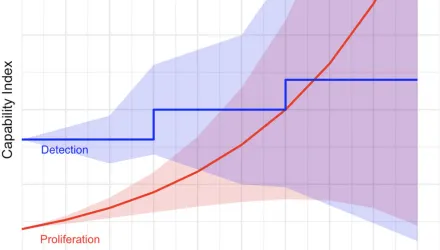Risk of large-scale nuclear war: A judgmental forecasting approach
Concerns about nuclear weapons use have surged in recent years, driven by Russia’s invasion of Ukraine, rising tensions in the Taiwan Strait, and renewed hostility between India and Pakistan. Although, any nuclear use would be catastrophic, large-scale nuclear war—defined here as causing at least 10 million deaths—could have irreversible global consequences. Existing research relies on formal models, scenario-based analyses, wargaming, and surveys to study the risk of nuclear war. But each of those methods has limitations. This article introduces judgmental forecasting as a complementary method. In an original two-part forecasting survey with topical experts and accurate geopolitical forecasters (superforecasters), we ask respondents to estimate the likelihood of large-scale nuclear catastrophe by 2045 and to evaluate how specific geopolitical developments and policy interventions might affect that risk. We find that experts assign a median 5 percent probability to a large-scale nuclear event by 2045, while superforecasters estimate 1 percent. Among policy options, a multilateral crisis communication mechanism emerged as the most promising for reducing risk. Notably, broadly discussed issues—such as a no-first use policy or removing sole authority for a US president to launch nuclear weapons—were regarded as relatively less important. These findings offer new insights into the perceived pathways to nuclear war and inform policy strategies for risk reduction.





